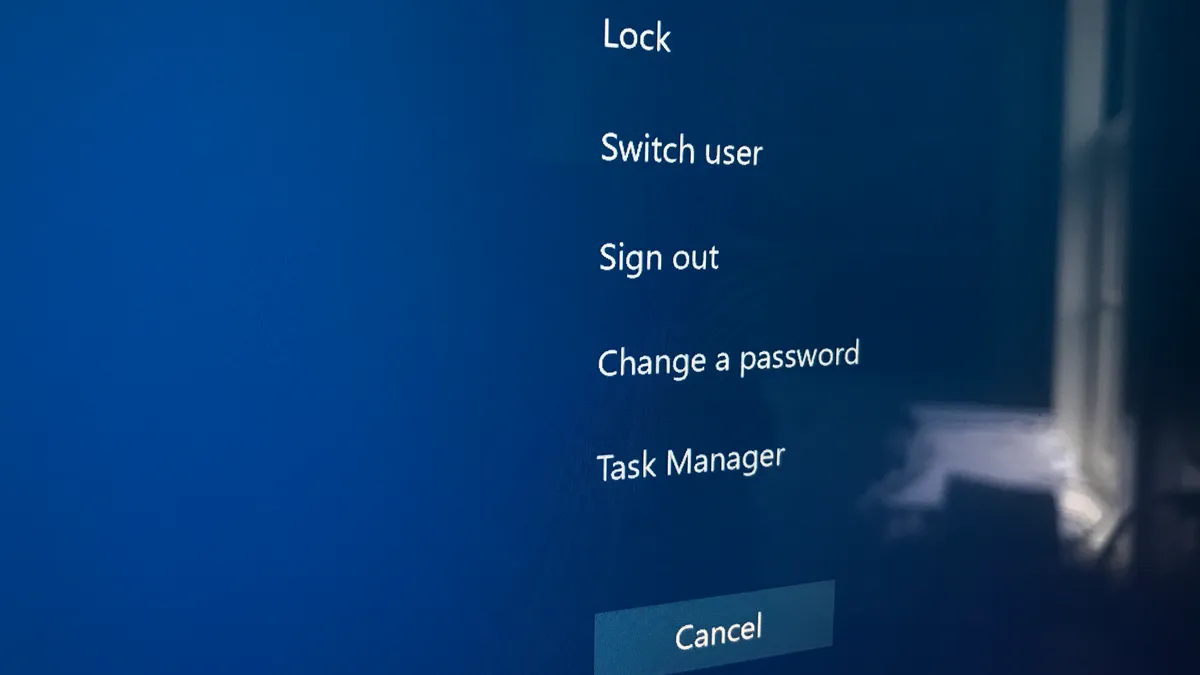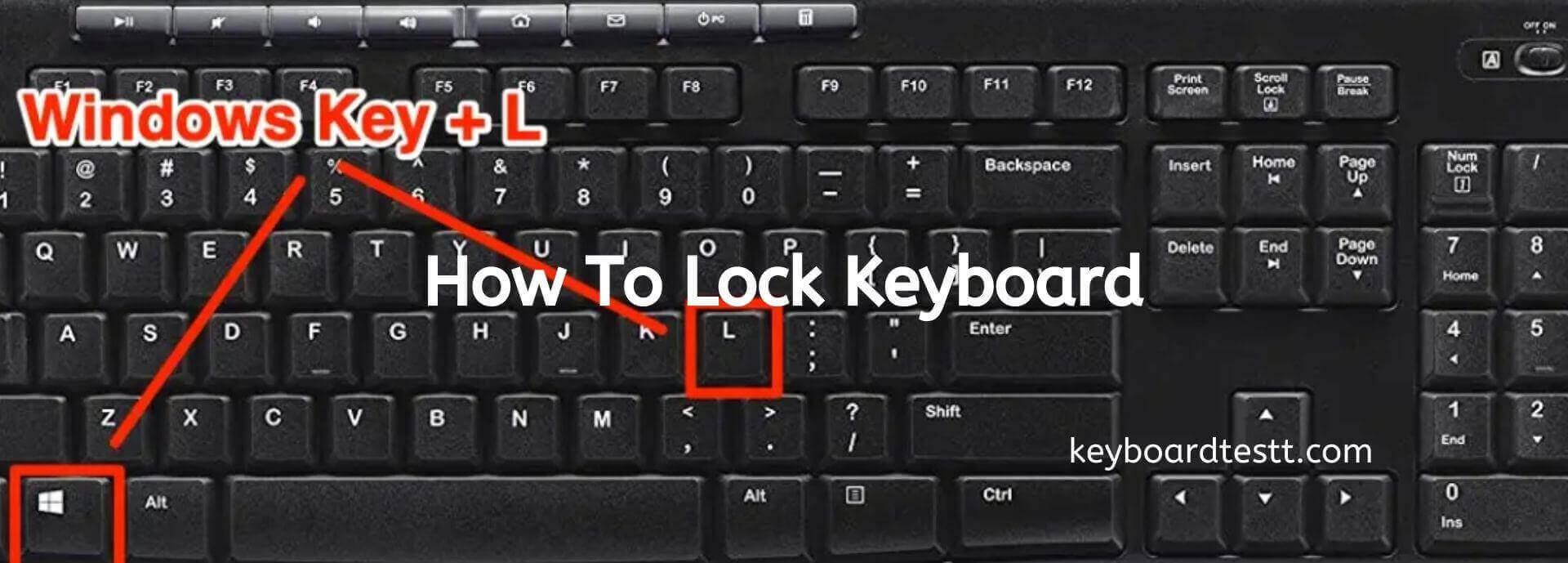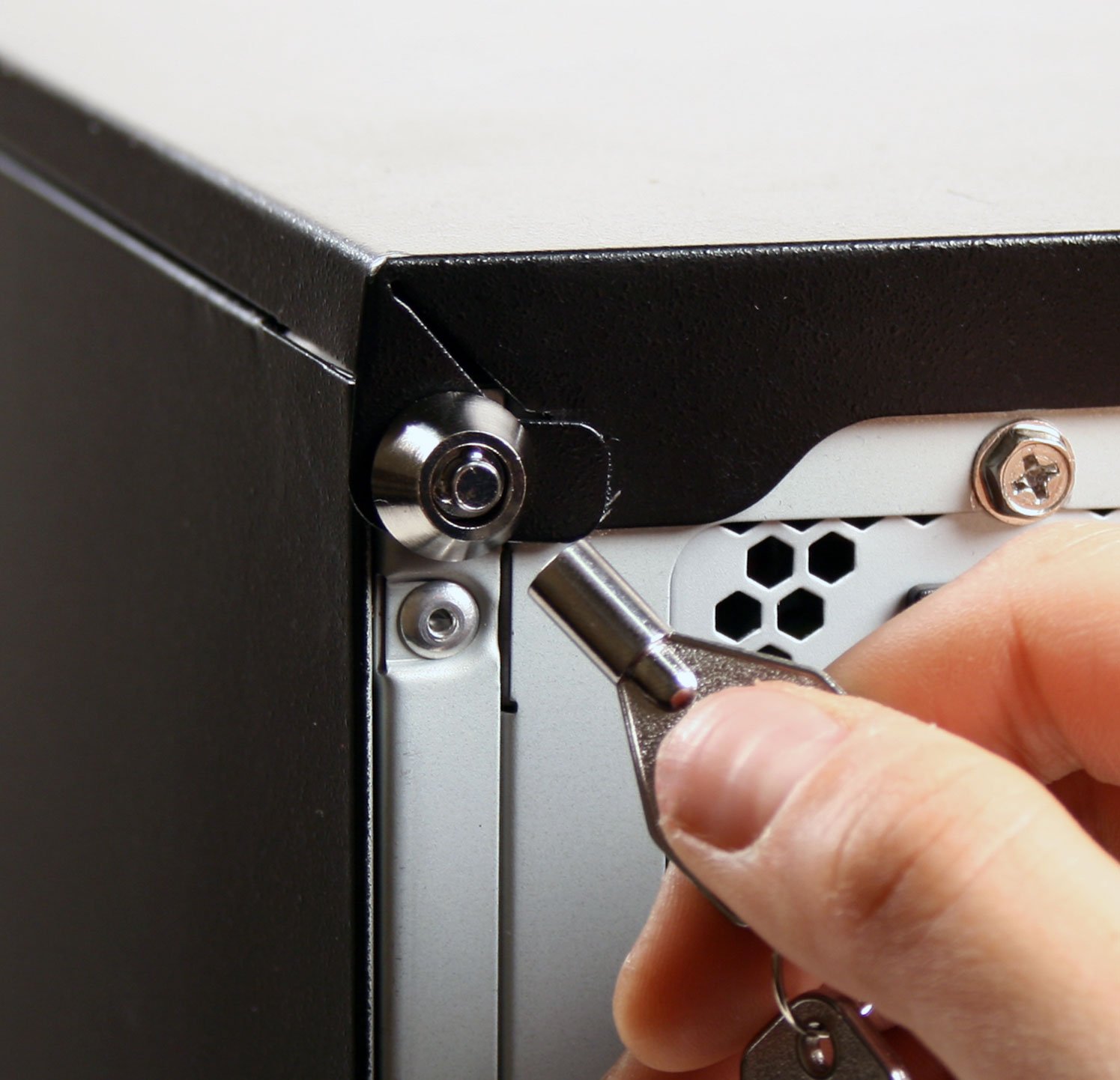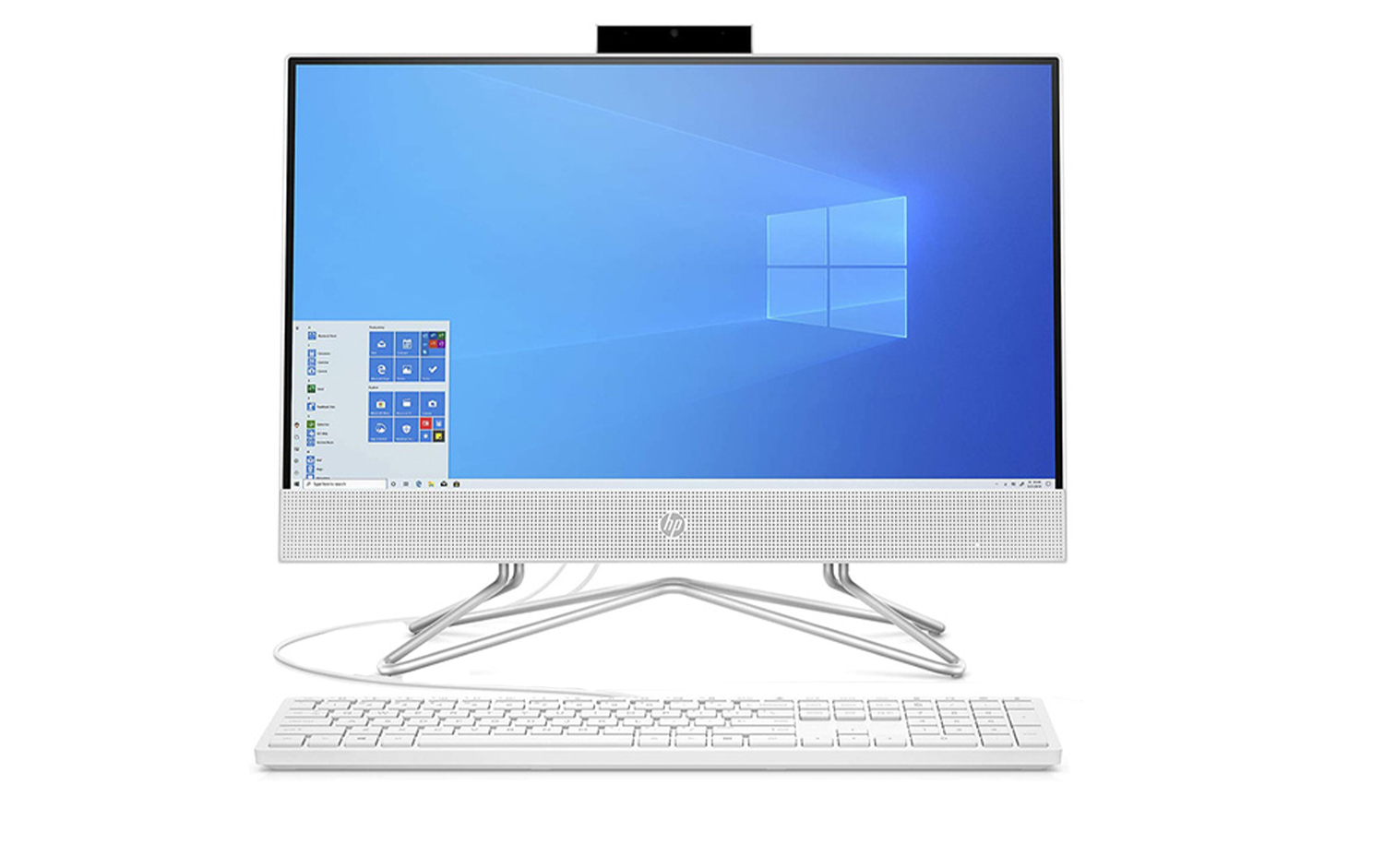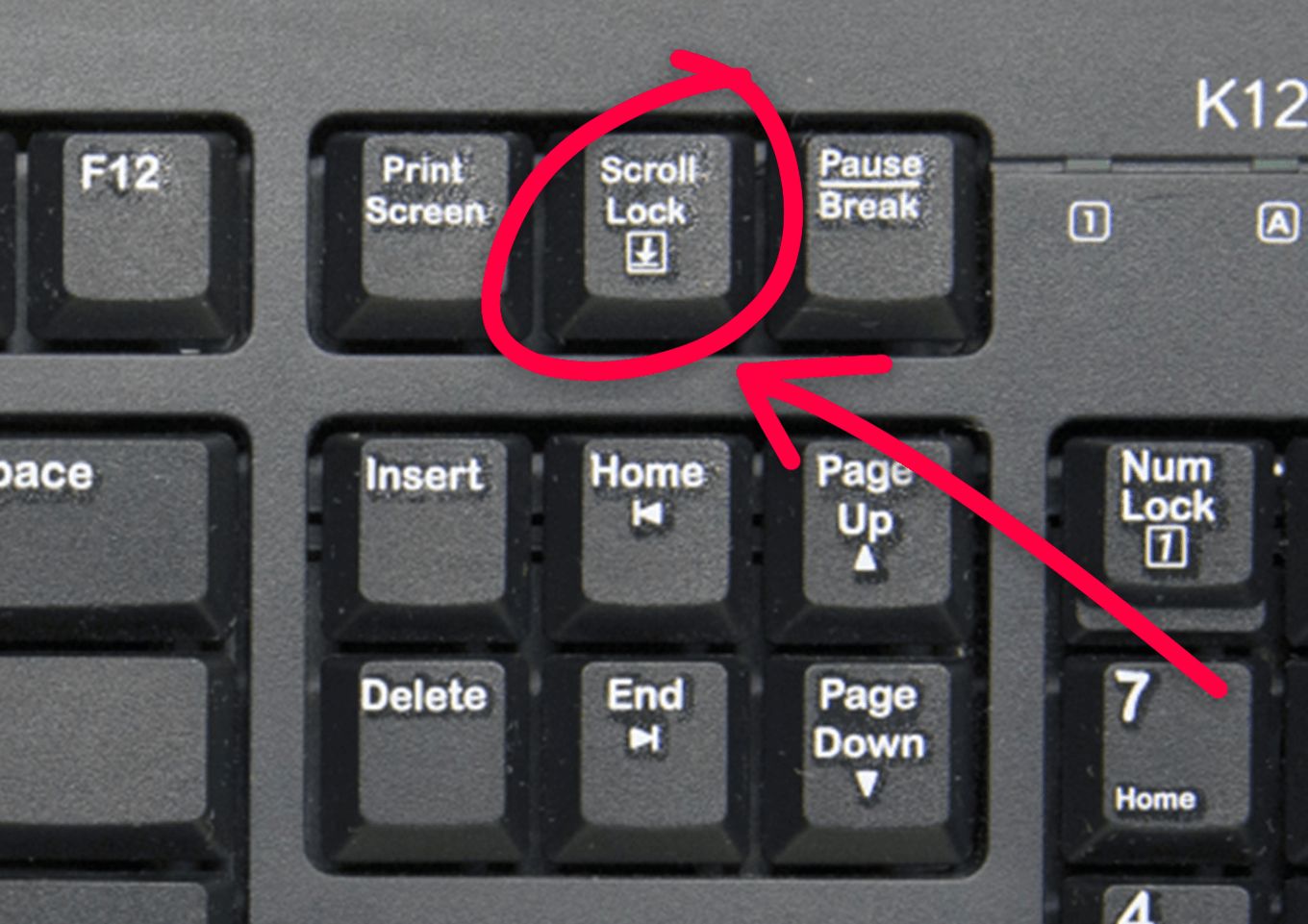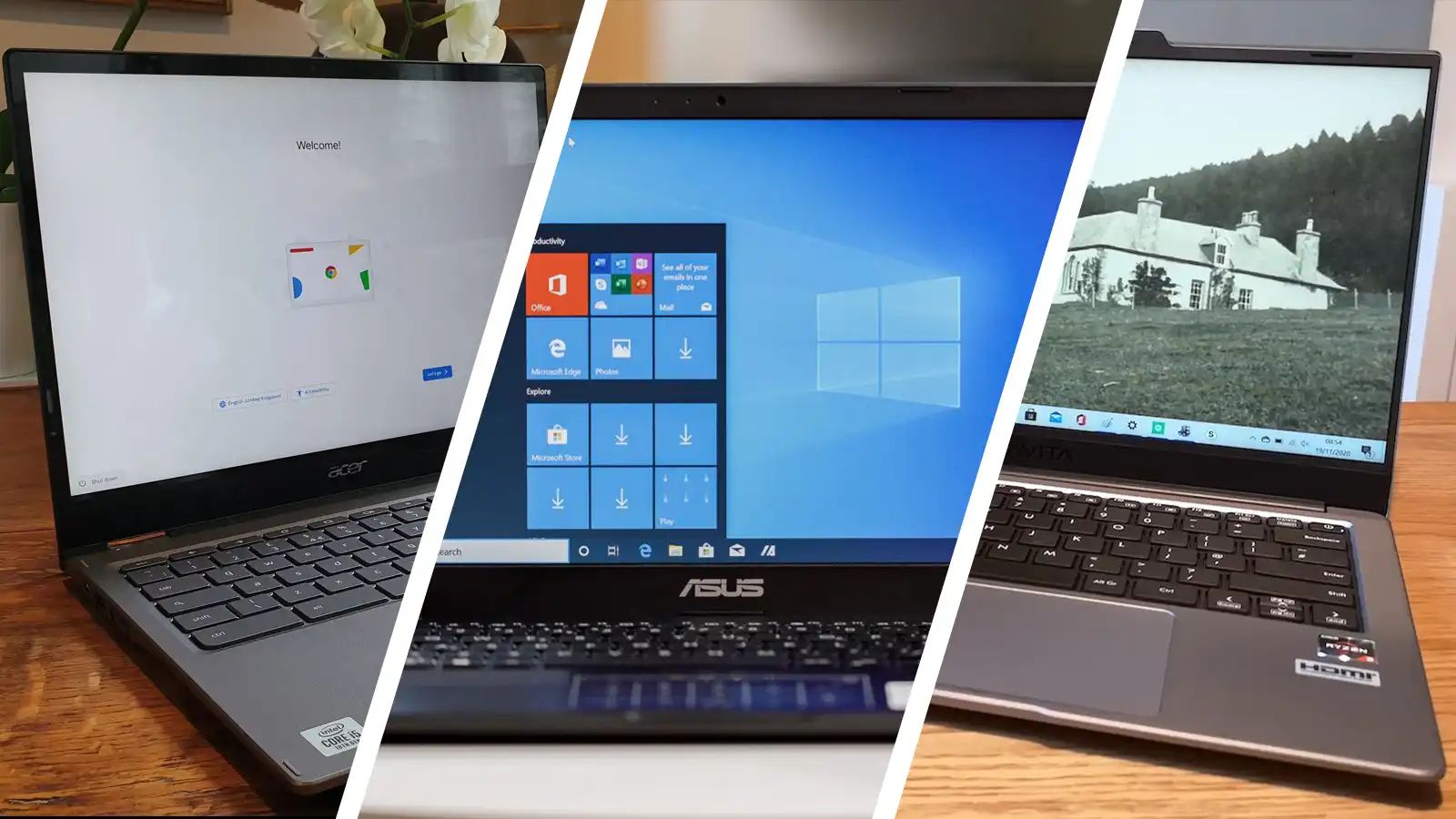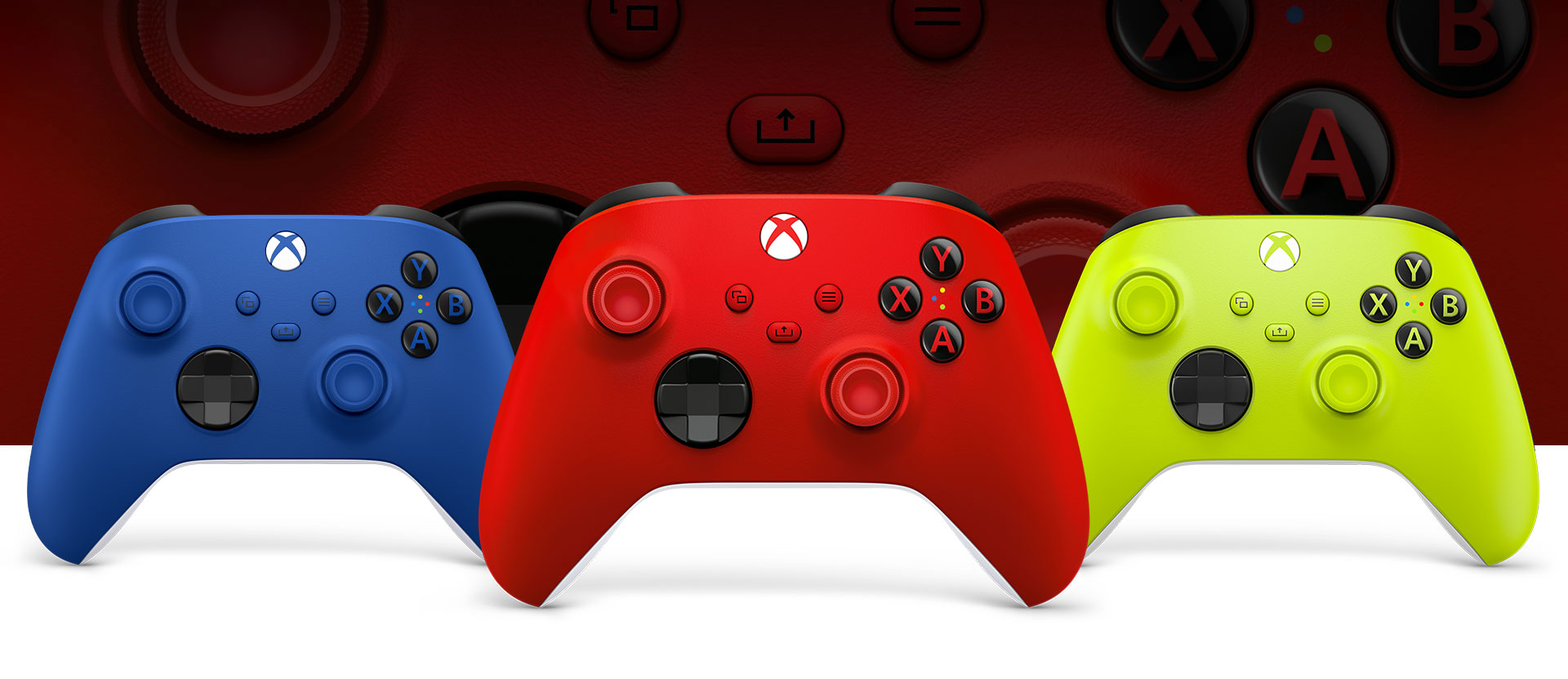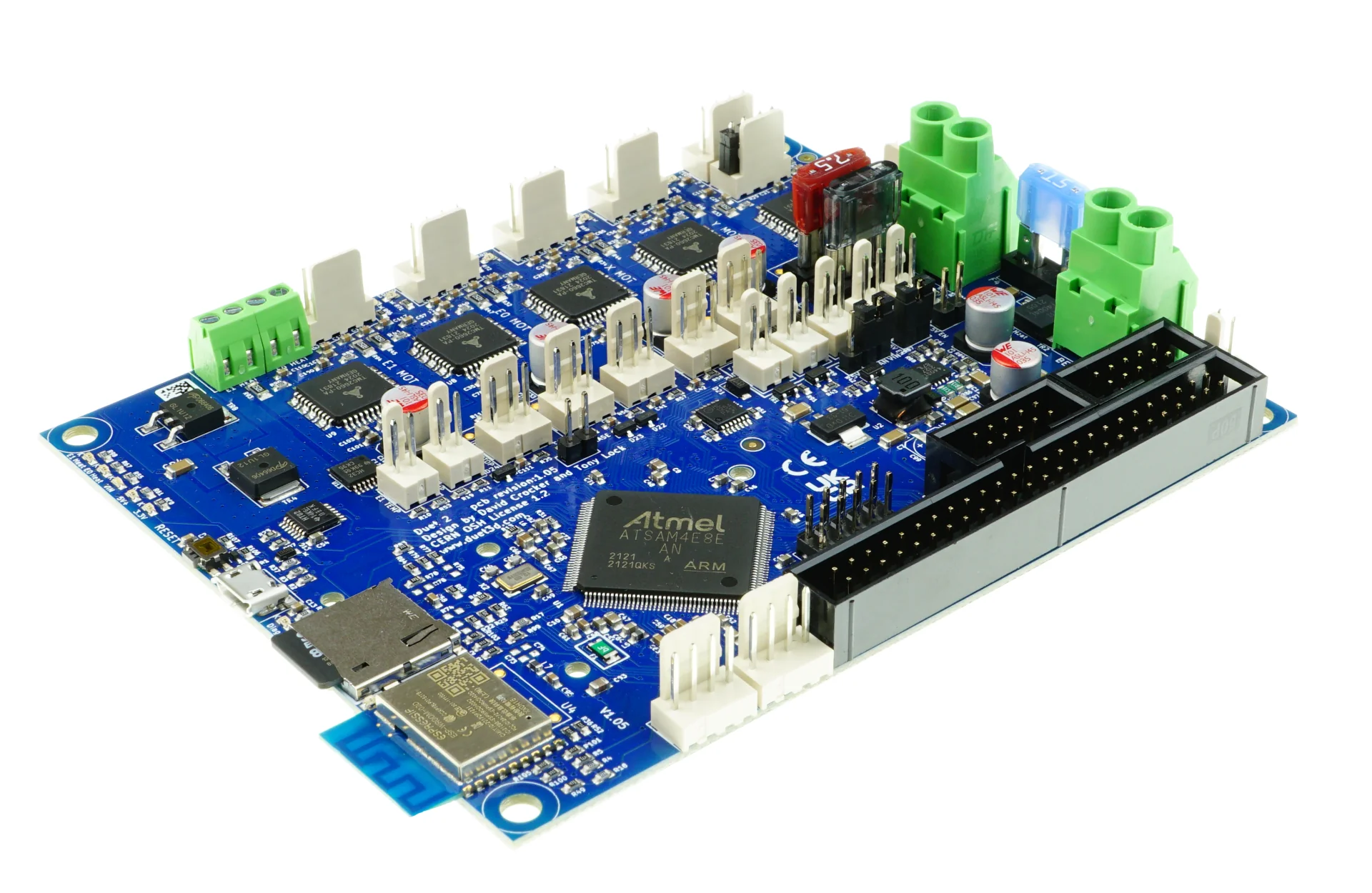Introduction
Locking your PC is an essential practice that helps protect your personal information and ensures the security of your system. Whether you use your computer for work, online banking, or personal use, keeping it locked when not in use is crucial in preventing unauthorized access, identity theft, or data breaches.
Locking your PC not only safeguards your sensitive data but also provides peace of mind when you step away from your device, knowing that it is secure from prying eyes and potential malicious activities.
In this article, we will explore the various methods available to lock your PC, ranging from keyboard shortcuts to dedicated buttons. We will also discuss best practices for locking your PC and protecting your digital life.
By implementing these simple yet effective measures, you can significantly enhance the security of your PC and reduce the risk of unauthorized access. So, let’s dive in and discover the different ways to lock your PC and ensure your privacy and data remain safe.
Why Should You Lock Your PC?
Locking your PC serves as a vital line of defense against unauthorized access and potential security threats. Here are several reasons why you should make it a habit to lock your PC:
- Data Protection: Locking your PC ensures that sensitive files, documents, and personal information remain confidential. It prevents unauthorized individuals from accessing your data, protecting you from potential identity theft or exposure of sensitive information.
- Privacy Preservation: Locking your PC preserves your privacy by restricting access to your personal accounts, emails, and social media profiles. It prevents others from tampering with or viewing your private information, ensuring your online presence remains secure.
- Preventing Unauthorized Usage: Locking your PC prevents unauthorized individuals from using your system without your consent. This is especially important in shared environments, workplaces, or public places where leaving your PC unlocked can expose it to potential misuse or tampering.
- Preventing Data Breaches: Locking your PC is an effective measure to prevent potential data breaches. Even if someone gains physical access to your computer, they won’t be able to access your files or make unauthorized changes without the appropriate password or authentication.
- Protecting Against Malicious Activities: Locking your PC helps protect against potential malware or malicious activities that can occur when your system is left unattended. It reduces the risk of unauthorized installations, modifications, or access to critical system settings.
By understanding the importance of locking your PC, you can take proactive steps to secure your personal information, maintain your privacy, and minimize the potential risks associated with unauthorized access or misuse of your computer.
Different Methods of Locking PC
Locking your PC can be achieved through various methods, each providing a convenient way to secure your system when you’re not actively using it. Let’s explore some of the common methods of locking your PC:
- Locking Your PC with Keyboard Shortcuts: One of the quickest and simplest ways to lock your PC is by using keyboard shortcuts. On Windows, you can press “Windows Key + L” to instantly lock your computer and require a password to access it again.
- Locking Your PC with the Start Menu: Another method is using the Start menu. Click on the Windows icon in the bottom left corner and select the user account picture. From the menu that appears, choose “Lock” to secure your PC.
- Locking Your PC with a Dedicated Button: Some keyboards or laptops have a dedicated button or combination of keys specifically for locking the PC. Check your device’s documentation or keyboard settings to see if this feature is available. Using a dedicated button can provide added convenience and quick access to lock your PC.
- Auto-Locking Your PC with Screensaver Settings: You can set your PC to automatically lock after a period of inactivity by configuring the screensaver settings. Access the screensaver settings from the Control Panel or personalization settings, and enable the option to require a password when the screensaver activates.
These methods offer flexibility and ease of use, allowing you to secure your PC with just a few simple steps. Choose the method that suits your preference and device capabilities to ensure a convenient way to lock your PC.
Locking Your PC with Keyboard Shortcuts
One of the most efficient and straightforward ways to lock your PC is by using keyboard shortcuts. Windows provides a simple combination of keys that instantly locks your computer and requires a password to regain access. Here’s how you can lock your PC using keyboard shortcuts:
- Ensure that you are on the desktop or any active window.
- Press the Windows Key on your keyboard. It is usually located next to the left Ctrl key and has the Windows logo.
- While holding down the Windows Key, press the letter L. This will simultaneously activate the lock screen and prevent anyone from accessing your PC without the necessary password.
Once you have executed the keyboard shortcut, you will be presented with the lock screen. To unlock your PC and resume your activities, simply enter your password and press Enter or click on the “Sign In” button.
Using keyboard shortcuts to lock your PC is a convenient option, especially when you need to quickly step away from your computer. It ensures that your system remains secure and inaccessible to unauthorized individuals.
Remember to always lock your PC whenever you leave it unattended, whether it’s in a public space or even within the confines of your home. This simple habit can go a long way in safeguarding your personal information and maintaining the privacy of your digital life.
Locking Your PC with the Start Menu
Another convenient method to lock your PC is by using the Start menu. Windows provides a straightforward way to access the lock feature directly from the Start menu. Here’s how you can lock your PC using the Start menu:
- Click on the Windows icon located at the bottom left corner of your screen to open the Start menu.
- Next, click on your user account picture displayed at the top of the Start menu. A drop-down menu will appear.
- From the drop-down menu, select the “Lock” option. This will instantly lock your PC and require a password to regain access.
Once you’ve followed these steps, your PC will be locked and only accessible with the correct password. When you’re ready to resume your work, simply enter your password on the lock screen and press Enter or click on the “Sign In” button.
Locking your PC with the Start menu provides a convenient way to secure your system with just a few clicks. It is particularly useful if you prefer using the mouse or touch screen interface. Make it a habit to use this method whenever you step away from your computer, ensuring that your personal information remains protected.
Remember, keeping your PC locked when not in use adds an extra layer of security and helps prevent unauthorized access. It’s a simple yet effective practice that can safeguard your privacy and sensitive data from potential threats.
Locking Your PC with a Dedicated Button
In addition to keyboard shortcuts and the Start menu, some keyboards or laptops provide a dedicated button or combination of keys specifically designed to lock your PC. This feature offers a convenient and quick way to secure your system without navigating through menus or using complex shortcuts. Here’s how you can lock your PC using a dedicated button:
- Check your keyboard or laptop documentation to identify if it has a dedicated lock button or a combination of keys.
- Locate the dedicated lock button or the key combination on your keyboard. It is often labeled with a lock symbol or identified in the user manual.
- Press the dedicated lock button or the designated key combination to activate the lock feature. This will immediately lock your PC and prevent access without the appropriate password.
Once activated, your PC will display the lock screen, and you will be required to enter your password to unlock it and resume your activities.
Using a dedicated lock button or key combination streamlines the process of locking your PC, allowing you to secure your system with a single press. It offers a convenient solution, particularly for those who prefer physical buttons or quick access to lock their computers.
Check your keyboard or laptop settings to ensure that the dedicated button or key combination is enabled. If it’s not, you may need to customize your keyboard settings or consult the manufacturer’s instructions to enable this feature.
Remember, regardless of the method you choose to lock your PC, it is essential to make it a habit to lock your computer whenever you step away from it. This simple practice can go a long way in ensuring the privacy and security of your personal information.
Auto-Locking Your PC with Screensaver Settings
Another effective method to automatically lock your PC after a period of inactivity is by configuring the screensaver settings. This feature ensures that your computer will lock itself when the screensaver activates, adding an extra layer of security. Here’s how you can enable auto-locking with screensaver settings:
- Access the Control Panel by searching for it in the Start menu or pressing the Windows Key + R to open the Run dialog box, then type in “control panel” and press Enter.
- In the Control Panel, select “Appearance and Personalization” or “Personalization” depending on your Windows version.
- Click on “Change screen saver” or “Screen Saver” to open the screensaver settings window.
- Choose a screensaver of your preference from the drop-down menu.
- Check the box that states “On resume, display logon screen” or a similar option. This ensures that when the screensaver activates, your PC will lock and require a password to regain access.
- Set the desired “Wait time” for the screensaver to activate after a period of inactivity. This time determines how long your PC will be idle before it locks itself.
- Click “Apply” and then “OK” to save the changes.
Once configured, your PC will automatically lock itself when the screensaver activates after the specified period of inactivity. Simply move the mouse or press a key to wake up the screen and enter your password to unlock your PC.
Enabling auto-locking with screensaver settings is a convenient option, especially if you tend to step away from your computer frequently. It ensures that your PC remains secure even if you forget to manually lock it.
Remember to set an appropriate wait time for the screensaver based on your personal preferences and requirements. A shorter wait time may provide more frequent locking but may be inconvenient if you prefer longer idle periods. Find a balance that suits your needs.
By utilizing the auto-locking feature with screensaver settings, you can enhance the security of your PC and ensure that it locks itself when not in use, providing added protection against unauthorized access.
Best Practices for Locking Your PC
Locking your PC is an essential practice for maintaining the privacy and security of your personal information. In addition to the various methods available to lock your PC, here are some best practices to follow:
- Choose a Strong Password: Use a unique and complex password that includes a combination of uppercase and lowercase letters, numbers, and special characters. Avoid using common phrases or easily guessable information.
- Enable Two-Factor Authentication: For an extra layer of security, enable two-factor authentication on your PC. This adds an additional step, such as providing a verification code via email or text message, to authenticate your identity.
- Keep Your System and Software Updated: Regularly update your PC operating system and software applications to ensure that you have the latest security patches and bug fixes. Updates often address vulnerabilities that could be exploited by attackers.
- Clear Your Desktop and Close Sensitive Applications: Before locking your PC, clear your desktop of any sensitive files or documents and ensure that you close any open applications that contain personal or confidential information. This reduces the risk of unauthorized access if someone gains physical access to your locked PC.
Implementing these best practices establishes a strong foundation for securing your PC and safeguarding your personal data. By following these guidelines, you can minimize the risk of unauthorized access, identity theft, or data breaches.
Remember, the goal of locking your PC is to protect your information and maintain your privacy. Make it a habit to lock your PC whenever you step away from it, even if it’s just for a few minutes. Developing this simple habit can go a long way in ensuring the security and confidentiality of your personal data.
By combining these best practices with the appropriate locking method that suits your needs, you can maintain a high level of security for your PC and enjoy peace of mind knowing that your information is safe.
Choose a Strong Password
When it comes to securing your PC, one of the most fundamental practices is choosing a strong password. A strong password provides an essential barrier against unauthorized access and helps protect your personal information. Here are some tips to help you choose a strong password:
- Length Matters: Aim for a password that is at least 12 characters long. The longer the password, the more secure it is against brute-force attacks.
- Include a Variety of Characters: Create a password that includes a combination of uppercase and lowercase letters, numbers, and special characters. This complexity makes it more difficult for attackers to guess or crack your password.
- Avoid Common Words or Phrases: Avoid using common words or phrases, as these can be easily guessed by attackers. Instead, choose a password that is unique and unrelated to personal information.
- Don’t Use Obvious Patterns: Avoid using sequential numbers, repeated characters, or obvious patterns. Such patterns are easy for attackers to identify and exploit.
- Consider Passphrases: Passphrases can be used as strong passwords. Instead of a single word, create a password using a combination of multiple words, numbers, and symbols. This approach can make your password both secure and easier to remember.
- Do Not Reuse Passwords: It is crucial to use unique passwords for different accounts and platforms. Reusing passwords across multiple accounts increases the risk of being compromised if one account is breached.
- Regularly Update Your Password: It is a good practice to update your passwords periodically, especially for critical accounts. Changing passwords every few months can help maintain the security of your PC and online accounts.
Choosing a strong password is an essential step in protecting your PC from unauthorized access and potential security breaches. By following these guidelines and creating a unique and complex password, you can significantly enhance the security of your PC and safeguard your personal information.
Remember, a strong password is key to maintaining the confidentiality of your digital life. Invest the time and effort in creating a strong password and avoid taking shortcuts that could compromise the security of your PC and personal data.
Enable Two-Factor Authentication
When it comes to securing your PC, enabling two-factor authentication (2FA) is an effective measure that adds an extra layer of security to your accounts. With 2FA, you provide an additional method of verifying your identity beyond just a password. Here’s why you should enable two-factor authentication:
- Enhanced Security: Two-factor authentication significantly improves the security of your accounts by requiring a second method of verification. Even if someone manages to obtain or guess your password, they would still be unable to access your accounts without the secondary authentication step.
- Protection Against Unauthorized Access: Two-factor authentication serves as a powerful deterrent against unauthorized access to your PC. It ensures that only you, as the authorized user, can access your accounts, even if your password is compromised.
- Mitigating the Impact of Password Leaks: In the event of a password leak or data breach, having two-factor authentication enabled protects your accounts from being easily compromised. Attackers would need both your password and the secondary authentication method to gain access to your PC.
- Wide Range of Options: Two-factor authentication offers several options for the secondary authentication step, including receiving a verification code via SMS, using an authenticator app, or utilizing hardware tokens. Choose the method that suits your preferences and provides the highest level of security for your PC.
To enable two-factor authentication on your accounts, including your PC login, follow the specific instructions provided by the service or platform you are using. Typically, the process involves linking your account to a verification app or providing a phone number for receiving authentication codes.
Keep in mind that two-factor authentication may require additional steps when logging in, such as entering a verification code or confirming your identity through a biometric authentication method. However, the added security it provides is well worth the small inconvenience.
By enabling two-factor authentication, you significantly reduce the risk of unauthorized access to your PC. It adds an extra layer of protection to your accounts and reinforces the security measures you have in place.
Remember to enable two-factor authentication for all of your accounts that support it, including your PC login. This ensures a robust defense against unauthorized access and helps keep your personal information safe.
Keep Your System and Software Updated
Keeping your PC’s operating system and software applications updated is a crucial practice in maintaining the security and integrity of your system. Regular updates provide essential security patches and bug fixes that help protect against potential vulnerabilities. Here are the reasons why you should always keep your system and software updated:
- Security Enhancements: Software updates often include security patches that address known vulnerabilities. By keeping your system and software up to date, you are ensuring that you have the latest security measures in place, reducing the risk of exploitation by attackers.
- Protection Against Malware and Exploits: Outdated software can become a target for malware and exploits that take advantage of known security flaws. By regularly updating your system and software, you are fortifying your defenses and minimizing the risk of a security breach.
- Performance Improvements: Updates not only enhance security but also often introduce performance improvements and bug fixes. This can result in a smoother and more efficient experience when using your PC, contributing to a better overall user experience.
- Compatibility: Updates also ensure that your system and software remain compatible with the latest technologies and standards. This prevents any interoperability issues and ensures that your PC can run efficiently with other devices and software.
- New Features and Functionality: Updates can introduce new features, tools, and functionalities that enhance your computing experience. By keeping your system and software up to date, you can take advantage of these added capabilities and improve your productivity.
To keep your system and software updated, enable automatic updates whenever possible. Most operating systems and software applications provide the option to automatically download and install updates, ensuring that you receive the latest patches without manual intervention.
However, in some cases, you may need to manually check for updates and install them. Regularly review your system and software settings to ensure that you are not missing any critical updates that can improve the security and performance of your PC.
Remember, keeping your system and software updated is an integral part of maintaining the security of your PC. By staying up to date, you are reducing the risk of security breaches, ensuring compatibility, and enjoying the latest features and enhancements.
Clear Your Desktop and Close Sensitive Applications
When it comes to securing your PC, it’s not just about locking it when you’re not using it. Clearing your desktop and closing sensitive applications before locking your PC is an essential practice that adds an extra layer of security. Here’s why you should make it a habit to clear your desktop and close sensitive applications:
- Prevent Unauthorized Access: By clearing your desktop of any sensitive files or documents, you reduce the risk of unauthorized individuals gaining access to your personal information. This is especially important if you have a habit of leaving your PC unattended in public spaces.
- Ensure Confidentiality: Closing sensitive applications like email clients, financial software, or password managers before locking your PC ensures that no one can access them without your permission. This protects your sensitive information from prying eyes and unauthorized access.
- Minimize Exposure to Breaches: Closing sensitive applications when you lock your PC can help minimize the impact of a potential security breach. If someone gains physical access to your locked PC, closing these applications prevents them from viewing or tampering with your sensitive data.
- Prevent Accidental Access: Clearing your desktop and closing sensitive applications prevents accidental access by family members, colleagues, or friends who may use your PC with good intentions but could inadvertently encounter private or sensitive information.
- Reduce Distractions: Clearing your desktop helps create a clean and clutter-free workspace when you unlock your PC. This allows you to focus on your tasks without being distracted by unnecessary files or icons scattered across your desktop.
Make it a habit to close sensitive applications and clear your desktop before locking your PC. It only takes a few extra seconds but can go a long way in protecting your privacy and sensitive information.
Remember, securing your PC is not just about implementing locking mechanisms; it’s also about taking additional steps to ensure that your sensitive files and applications are protected from unauthorized access.
By practicing these habits, you can enhance the security of your PC, maintain your confidentiality, and minimize the risks associated with leaving your computer unattended.
Conclusion
Locking your PC is a critical practice for maintaining the security and privacy of your personal information. Whether you are stepping away from your computer for a few minutes or leaving it unattended for an extended period, taking the necessary steps to lock your PC ensures that unauthorized individuals cannot access your data or tamper with your system.
In this article, we have explored various methods to lock your PC, including keyboard shortcuts, the Start menu, dedicated buttons, and auto-locking with screensaver settings. Each method offers convenience and flexibility, allowing you to choose the option that best suits your needs and preferences.
Moreover, we have discussed some best practices to follow when securing your PC. Choosing a strong password, enabling two-factor authentication, keeping your system and software updated, and clearing your desktop and closing sensitive applications are all essential steps in reducing the risk of unauthorized access and protecting your personal information.
By implementing these practices and making them a part of your routine, you can bolster the security of your PC and safeguard your valuable data. Remember, security is a continuous effort, and it’s important to stay vigilant by regularly updating your security measures and staying informed about the latest threats and best practices.
So, take the necessary steps to lock your PC and protect your digital life. With the right measures in place, you can enjoy peace of mind knowing that your personal information is secure and your privacy is protected.







